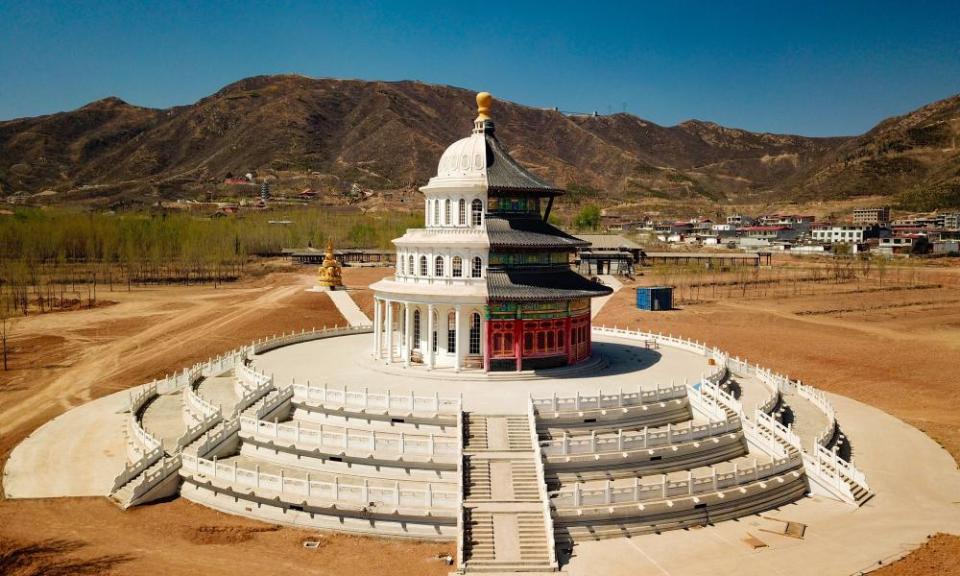China’s ugliest buildings: contest to celebrate unsightly architecture begins

An infamous “hall of shame” listing of China’s top 10 “ugliest” buildings has kicked off with 87 bizarre designs in the running, including a violin-shaped church and an Inner Mongolia hotel in the form of a monstrous babushka doll.
Over the past 11 years a Chinese architecture website, archcy.com, has been inviting people to vote in the lighthearted annual contest that it hopes will encourage people to ponder the flexible notion of beauty.
Related: Carbuncle Cup: Walkie Talkie wins prize for worst building of the year
For years, China has been an experimental ground for ambitious domestic and international architects, with mixed results. There is a national broadcaster building in Beijing, designed by the Dutch architect Rem Koolhaas, that is called “big pants” by Chinese social media users as it looks like a pair of legs. In an unfinished Hebei theme park, a quirky east-meets-west building features one half looking like China’s Temple of Heaven and the other like US Capitol Hill.
Among this year’s contenders is a “welcome to hell” glass bridge connecting two mountains in Sichuan that terrifies trekkers with two massive statues of people in traditional dress on the end of it, and a gigantic gate in a Yunnan park that mirrors the Arc de Triomphe in Paris.
The organiser of the competition said the purpose of the vote was to “provoke thinking about the beauty of and ugliness of architecture and promote architects’ social responsibility”. The website has partnered with some of China’s top architecture critics and firms.

This year’s competition comes as the central government becomes more prescriptive about architecture. In April the national development and reform commission (NDRC) banned the construction of “ugly buildings”.

Beijing’s top economic planning body urged local governments to ensure that buildingswere “suitable, economical, green and pleasing to the eyes”, although it did not specify what could be regarded as “ugly” architecture.
It is not the first time the authorities have stepped in to regulate how buildings should look in China. According to the Global Times, China’s ministry of housing and urban-rural development joined forces with the NDRC last year to issue a document clarifying how to further strengthen the management of architecture in Chinese cities. They concluded that large buildings that had a strange style were “a waste of resources”.
The official intervention triggered further curiosity among China’s internet users. On Weibo, the hashtag #BanningUglyArchitecture has been viewed 170m times. Users have also been sharing photos of what they consider “unattractive buildings” across the country.
Among them are students from the prestigious Zhejiang University in eastern China. They have been complaining about the university’s gigantic southern gate, which was built with donations from alumni. The gate is comprised of six pillars and five archways. Students say the gate is not fit for purpose, and have voted to make it this year’s “ugliest” architecture. So far, the gate has attracted 8,739 votes – and is on top of this year’s ugliest building list.

 Yahoo Finance
Yahoo Finance 